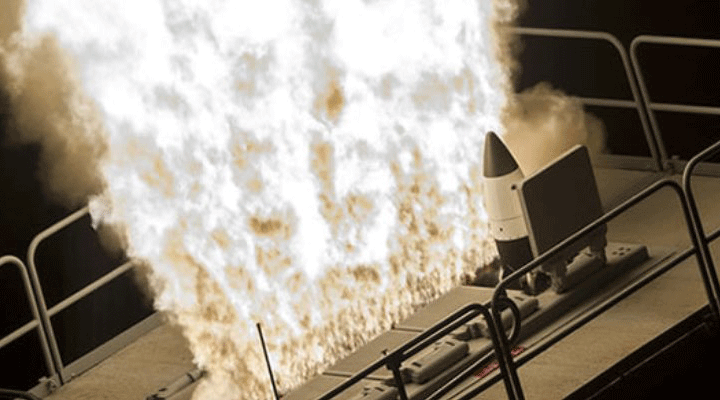In 1779, John Paul Jones, then captain of the Bonhomme Richard was engaged in a pitched naval battle with the British ship Serapis, when he is said to have replied to a demand for surrender withthe cry, “I have to yet begun to fight.” On Tuesday, the ship named in his honor, the USS John Paul Jones, an Arleigh Burke-class destroyer (the same class of ship as the USS John S. McCain and USS Fitzgerald), showed a little spirit of her own as she successfully intercepted a medium range ballistic missile fired from Hawaii.
Even with North Korea’s missile launch over Japan, Hurricane Harvey and the almost biblical scale of flooding in Houston have justifiably dominated U.S. news coverage this week. But even as soldiers from the 3rd Expeditionary Sustainment Command and other XVIII Airborne Corps troops from Ft. Bragg head to Texas for a Defense Support of Civil Authorities mission, the Missile Defense Agency has been keeping itself busy.
missile defenses making steady progress
Raytheon’s RIM-174 Standard Extended Range Active Missile, also known simply as the Standard Missile-6 (SM-6), has been in the inventory since 2013, but Tuesday marked only the second time one has intercepted a ballistic missile. For Tuesday’s Flight Test Standard Missile-27 Event 2, a “mock” medium-range ballistic missile was launched from the Pacific Missile Range Facility on Kauai, Hawaii. The Jones tracked the missile with its onboard AN/SPY-1 radar (a Lockheed Martin product) and fired two SM-6s, destroying the target.
The AN/SPY-1 and the SM-2 and SM-3 missiles are the core components of the Aegis ballistic missile defense system. The SM-6 uses the same body of the SM-2 with an improved homing radar.
We’ve talked a lot about THAAD, the Army’s land-based Terminal High-Altitude Area Defense system, which engages ballistic missiles in the later, or terminal, stage of their trajectory. The Aegis system, initially designed to shoot down aircraft and anti-ship missiles, has developed into a critical component of the U.S. ballistic missile defense system. Aegis can engage incoming missiles in their midcourse phase with the SM-3 and in their terminal phase with the SM-2.
Together, the two components provide what is quickly shaping up to be a reliable dome of protection from a limited ballistic missile attack.
A tall ship and a star to steer her by
The advantage of the Aegis system, of course, is its mobility. An Arleigh Burke-class destroyer can make way at more than 30 knots, or around 35 mph, about the speed of slalom water ski competitions. The difference, of course, is that the Jones is 505 feet long and 66 feet wide, and can pull that water skiier while its crew of 281 sailors cheer him on.
Assuming it could sail at 30 knots the whole way, the Jones could cover the distance between Pearl Harbor and Tokyo in a little more than 111 hours — just over four and a half days. The Navy can put one of these ships anywhere in the world almost literally at a moment’s notice.
That, Kim Jong-un, is a sea of fire.



